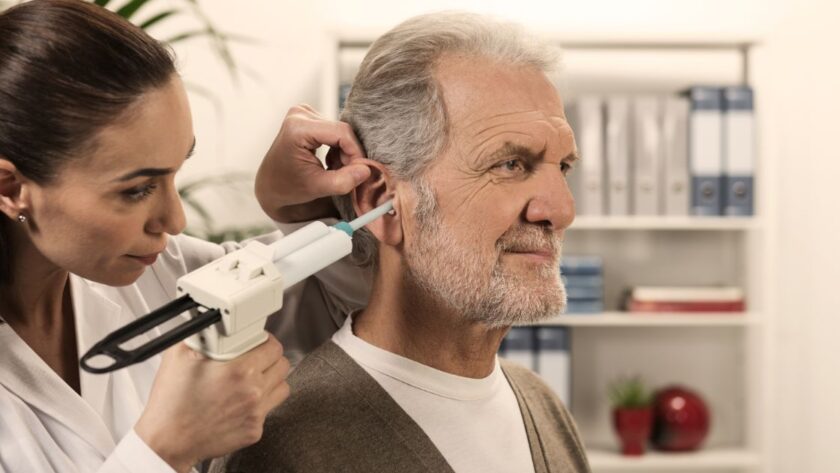Are you interested in learning more about impedance audiometry? This noninvasive and painless test is useful for measuring the pressure of sound through the ear canal, aiding in the diagnosis of issues related to hearing.
Impedance audiometry is a valuable tool that can help diagnose conditions such as Eustachian tube dysfunction, otosclerosis, perforations in the tympanic membrane, recurrence after surgery, and other medical problems associated with disorders of auditory conductivity.
It can also play an important role when fitting hearing aids or evaluating tinnitus-affected individuals. In this blog post, we will explore how impedance audiometry works and the many benefits it provides users.
What is Impedance Audiometry and How Can It Help the Hearing-Impaired Population?
Impedance audiometry is a specialized form of hearing testing that offers an in-depth evaluation for people experiencing hearing problems. It helps to diagnose disorders like conductive hearing loss, Eustachian tube dysfunction, otosclerosis, and abnormal middle ear pressure.
By measuring the responses a person has to sound waves, impedance audiometry gives additional data alongside traditional auditory tests that can provide further insight into issues with the middle or outer ear that are influencing hearing.
Ultimately, this type of test allows physicians to better understand the cause of any hearing issues and develop treatment plans that target their specific needs. With the assistance of impedance audiometry, the hearing-impaired population can be accurately and effectively helped in restoring their ability to detect sounds at a normal level.
The Benefits of Impedance Audiometry for Hearing Loss Patients
Impedance audiometry is an important diagnostic tool in the field of audiology, providing the most accurate and comprehensive assessment for hearing loss patients. This procedure helps clinicians measure the functioning of a patient’s middle and inner ear, providing key insights into their hearing health.
By assessing acoustic reflexes, tympanometry, and assessments of relative peak level differences between ears, impedance audiometry significantly increases accuracy compared to conventional audiograms, leading to more reliable results and better outcomes for hearing loss patients. It is highly beneficial for those suffering from conditions such as otosclerosis or congenital malformations that cause conductive hearing losses. All things considered, impedance audiometry can provide essential guidance in diagnosing and managing the effects of hearing loss on a patient’s life.
Understanding the Different Types of Tests Involved in Impedance Audiometry
Audiogram testing in Utah is a key part of impedance audiometry and provides valuable insight into a person’s hearing health. Impedance audiometry testing requires both air and bone conduction, as well as tympanometry to assess the mechanical function of the middle ear. Each type of audiogram test helps provide a comprehensive look at an individual’s ear health.
Air conduction testing measures sound received through the outer and middle ear, while bone conduction testing measures vibrations sent directly to the inner ear through the skull. Tympanometry tests allow for the measurement of air pressure in the ear, indicating the mobility of those three small bones (or ossicles) within the middle ear that are responsible for transmitting sound waves. With audiogram testing in Utah, clinicians gain a better understanding of how loud sounds need to be before they are heard by a person, providing them with an accurate picture of their hearing health and any problems they may have.
What to Expect During an Impedance Audiometry Appointment
An impedance audiometry appointment is the first step in discovering if your hearing is functioning as expected or requires further investigation. During an appointment, a specialized audiologist will conduct a series of tests to measure air and bone conduction of sound waves and acoustic reflexes, among other indicators.
During these tests, tones of different frequencies are emitted, and patients may be expected to indicate when they can detect them. Impedance audiometry appointments typically do not take more than 30 minutes to complete. Clients should come prepared with any medical information pertinent to their hearing health so that the audiologist has all the necessary facts to ensure an accurate assessment of the results.
In conclusion, it is important for hearing loss patients to understand the various types of tests involved with impedance audiometry and what to expect during an appointment. A proper diagnosis is crucial for pinpointing the size of the hearing loss, where it may be located in the patient’s ears, and what specific treatment might be best suited.
Professional impedance audiometry clinics are available that offer specialized services that can provide a customized solution for each case. With such clinics and treatments, individuals facing hearing loss no longer need to suffer from social exclusion or communication difficulties due to their impairment.




